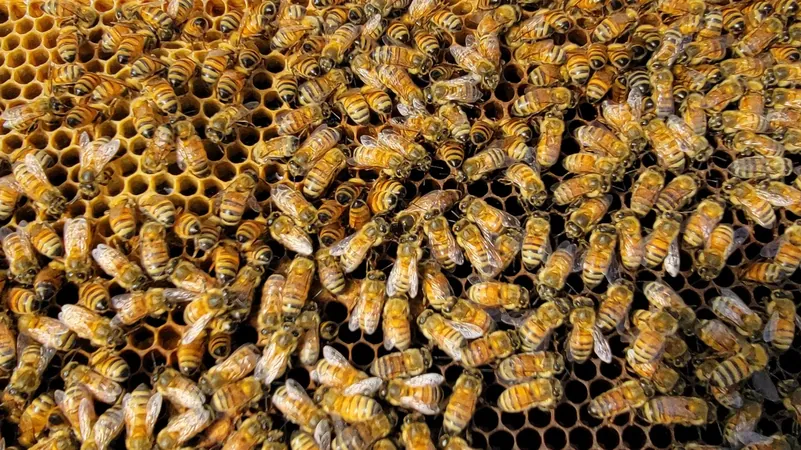
The Devastating Plight of Honeybees: A Grim Record of Die-Offs
2025-08-08
Author: Siti
The alarming decline of honeybee populations has reached unprecedented levels, striking a dire blow to US beekeepers. This past winter saw a shocking 62% die-off of commercial honeybee colonies—a grim statistic that follows a 55% loss the previous winter. What on earth is causing this catastrophic trend?
To uncover the truth, we spoke with Adam Novicki, an agriculture expert from the University of California. With deep roots in beekeeping, Novicki laid bare the complex threats facing these vital pollinators.
The Ruthless Enemy: Varroa Mites
At the forefront of this crisis is the Varroa destructor, a parasitic mite that was introduced to the US in the early '90s. Unlike the indigenous Apis cerana, which adapted to coexist with these pests, the Western honeybee, or Apis mellifera, has been left vulnerable. The Varroa mite not only feeds on honeybees but also acts as a vector for dangerous viruses, primarily the deformed wing virus. This virus compromises their immune systems, allowing other threats—like harsh weather or disease—to wreak havoc on colonies.
A Diabolical Reproductive Cycle
The Varroa mite reproduces in a particularly sinister way. Female mites infiltrate the cells of developing bee larvae, where they lay eggs and pass along viral loads. Once these infected bees emerge, they often exhibit deformations that render them incapable of flying—or worse, they can silently transfer viruses to other bees. This insidious life cycle accelerates the demise of entire hives.
Sacrifice for Survival?
In a tragic twist, honeybees will destroy their own infected larvae to prevent the spread of the mites. But as this cycle of sacrifice continues, the hive begins to dwindle, losing its capacity to thrive.
The Vicious Cycle of Collapse
Once a hive becomes weak, their honey is vulnerable to being stolen by neighboring colonies. As they raid the weakened hive, the mites jump onto the robbing bees, perpetuating their own life cycle and further spreading the threat.
A Looming Crisis in Agriculture
The scale of this issue is staggering. California's almond industry requires a staggering 2.4 million hives for adequate pollination. With 60% of beehives lost, the implications on food supply are severe.
The Double-Edged Sword of Pesticides
Adding to the bees' woes are pesticide exposures, particularly neonicotinoids. While these substances are designed to protect crops, they inadvertently poison bees by impairing their navigation abilities, leading them to get lost and decreasing overall population stability.
The Bigger Picture: Habitat Loss and Interconnected Issues
The loss of diverse forage is another critical concern. As farmers increasingly cultivate marginal lands, bees lose access to the varied nectar and pollen they desperately need to thrive. Without a diverse diet, their health and ability to combat threats decline further, ultimately jeopardizing their survival.
In short, the honeybee crisis is an intricate web of challenges, and the loss of these pollinators not only threatens our food supply but also highlights the fragility of our interconnected ecosystems. If action isn't taken soon, we could face a future where our agricultural systems, reliant on these tiny creatures, begin to collapse.


 Brasil (PT)
Brasil (PT)
 Canada (EN)
Canada (EN)
 Chile (ES)
Chile (ES)
 Česko (CS)
Česko (CS)
 대한민국 (KO)
대한민국 (KO)
 España (ES)
España (ES)
 France (FR)
France (FR)
 Hong Kong (EN)
Hong Kong (EN)
 Italia (IT)
Italia (IT)
 日本 (JA)
日本 (JA)
 Magyarország (HU)
Magyarország (HU)
 Norge (NO)
Norge (NO)
 Polska (PL)
Polska (PL)
 Schweiz (DE)
Schweiz (DE)
 Singapore (EN)
Singapore (EN)
 Sverige (SV)
Sverige (SV)
 Suomi (FI)
Suomi (FI)
 Türkiye (TR)
Türkiye (TR)
 الإمارات العربية المتحدة (AR)
الإمارات العربية المتحدة (AR)